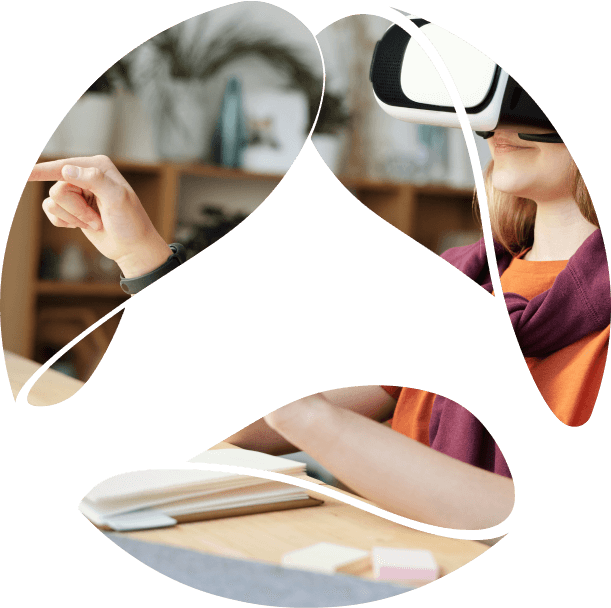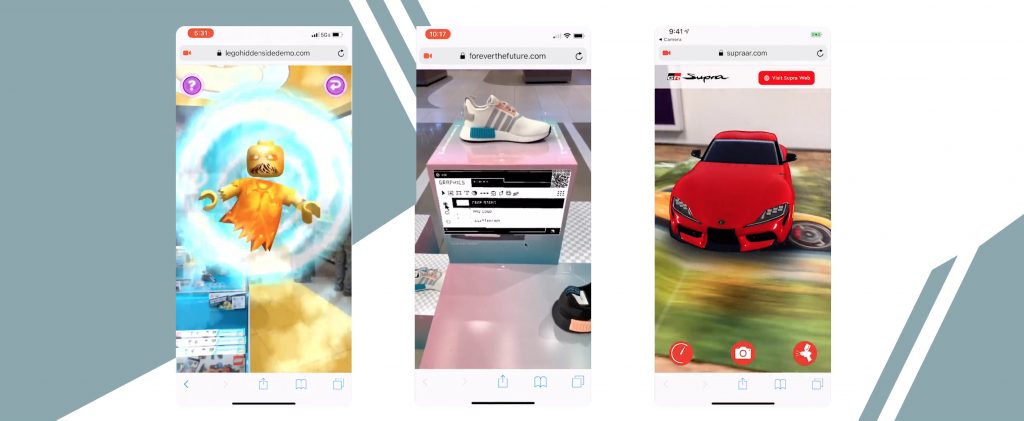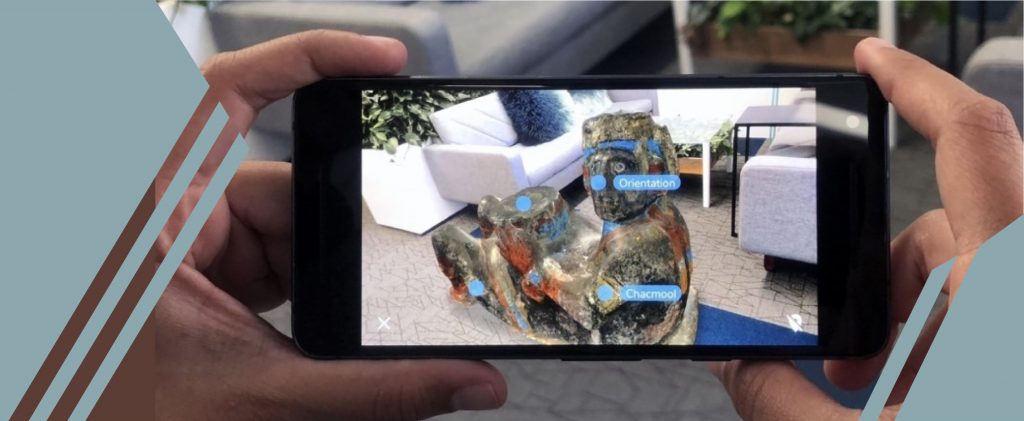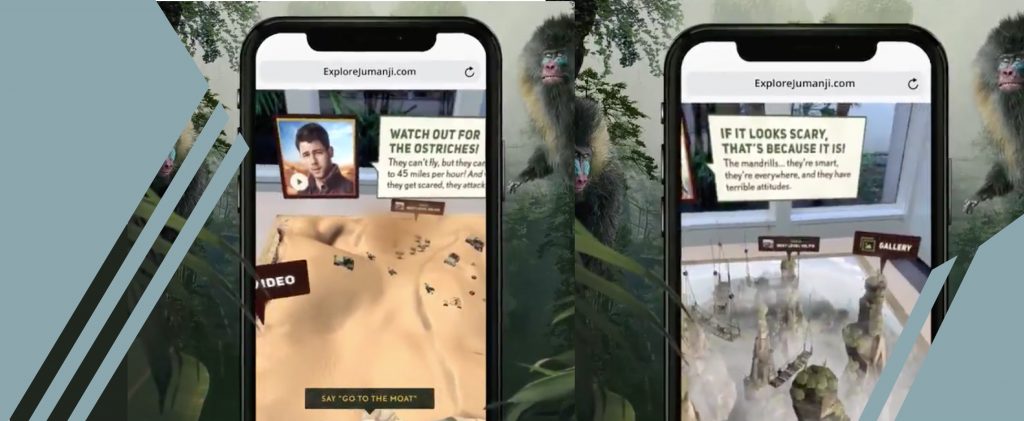The ultimate guide to Microsoft 365 document management
Explore the basics of document management in Microsoft 365. Examine the possibilities of integration OneDrive for Business, SharePoint, and Teams.

Exploring the Impact of WebAR on E-commerce, Advertising, Education, Entertainment, and Business.
Augmented Reality is becoming increasingly popular with developers and smartphone users, but it still needs to take its place among omnipresent technologies. To experience AR, users have to install a dedicated application, but often they delete it after a few uses or don’t even bother downloading it. WebAR is set to become the solution for users’ reluctance to experience it via apps, and there’s some good evidence that it’ll succeed.
WebAR is an Augmented Reality experience accessed via a web browser instead of an app. It provides this web-based AR experience using WebGL, WebRTC, WebVR, and APIs. But, you can create augmented reality and just need a phone to access it.
Web-based Augmented Reality enables smartphone users to discover AR technology most easily— via the web— without the burden of installation. It breaks barriers and creates interactive 3D models one can access through a QR code or a link. WebAR offers limited functionality for now compared to an app-based AR, but it already includes simple animations, video, and a certain degree of interactivity. Also, WebAR supports image target detection.
WebAR is a part of the immersive web, and although it doesn’t need its website or app, it still has some technical requirements. First, your smartphone must have sensors like a gyroscope accelerometer and RGB camera – things that most modern smartphones are equipped with – to run WebAR pages. Moreover, your browser should support WebXR, an API that allows users to view AR/VR content without installing extra plugins or software, and have AR Core installed (for Android devices).
For iOS device users, Apple developed AR Quick Look, an extension that enables users to use ARKit on the web. This grants quick and easy access to AR content via the web – AR Quick Look uses models in USDZ format. Then, after an AR image is displayed on the screen, the AR experience is accessed with just one tap. It works in the Safari browser and built-in applications like mail, notes, and messages, allowing you to see high-quality 3D objects.
USDZ format was created by Apple and Pixar Animation Studio and allowed developers to create 3D models for AR. It’s an extension of the USD format that combines several objects, like images and text, and renders them into one. USDZ is an unencrypted zip archive that can be created through Apple’s Python-based tools. It also includes a converter to transform file formats like .fbx, .abc, .gltf, and .obj into USDZ.
Some many other tools and frameworks help developers expand the immersive web with WebAR. For example, AR.js is an open-source library for Augmented Reality on the Web for improved WebAR performance on smartphones, including marker-based technology (simplified QR-codes) and location-based AR. It can efficiently perform a 60FPS and is very simple to build a WebAR experience. For modern web browsers to recognize and show 3D content beyond pixels, “3D content must be composable, interoperable, and standardizable” to move this technology forward.
WebAR, as AR, in general, can give its users unique experiences and immersive experiences. Still, there are a lot of aspects that should be thought through during its development. To be functional and user-friendly, WebAR should work in the following way.
The app-based AR experiences, like the ones of Facebook and Snapchat, use a cloud-based CMS that gives users an AR experience based on some trigger, meaning link, marker, or even the user’s face. The trigger requests the backend system to send the assets and code to launch the AR experience. There is a specific limit to the AR file size (4 Mb) to download quickly and work properly.
WebAR is also activated by triggers (QR codes or links), and however it uses web optimizations to download content, its size is still limited. Moreover, it’s better if an image of a QR code is flat, put on non-reflective material, and has a specific size. But if a mobile device’s computer vision AI can detect specific feature points of an image, the code will eventually work.
Despite giving more possibilities for smartphone users, WebAR has quite limited features; AR performance is just better on mobile apps. The memory limitation on the web page that displays an AR image is one of the obstacles to better WebAR performance, as it directly affects the quality of animations.
WebAR experiences’ functionality is also more limited compared to app-based AR. For example, placing objects on the wall or doing real-world measurements will be problematic. Compared to the app-based AR development process, during the creation of the WebAR experience, developers can’t access all the abilities and functionality of the devices they’re building it for. So, they can only work with the basic features.
Internet speed is another moment that can impede better WebAR functionality: it has to be of the highest speed and work without interruptions, as browser-based AR requires a constant connection to the Internet. However, with the coming of 5G, this issue will be irrelevant to web experiences.
Suppose you want to experience advanced WebAR features. In that case, you can try it out on Chrome Canary, an experimental version of Chrome for developers, which allows you to glance at the future of new technologies. For example, you can test the Chacmool demo – an educational AR experience to help users discover ancient Chacmool sculptures.
Conventional app-based AR is already widely used and available for everybody. Apps like Snapchat or Instagram have “masks” that have become a real trend. Ikea and LEGO have also successfully implemented this technology.
But there’s one thing that all these AR apps lack – autonomy. Therefore, WebAR technology has a chance to become as famous as an app-based one or even substitute it. Look at possible WebAR implementations in business, marketing, or everyday life.
The first and maybe the most exciting application of WebAR can be search queries. Google has already announced it’s going to bring AR to web searches. For example, when you’re looking up info about sharks, you can put an animated version of the animal on top of a real background; or you can try out videos of a pair of shoes to see how they’ll look in reality.
The latter feature opens a whole new range of possibilities for online shopping as customers would be more confident with their purchase if they could try it out first by interacting with the product’s 3D model.
WebAR is revolutionizing various industries by providing an immersive and interactive experience. From e-commerce and advertising to education and entertainment, let’s explore how WebAR reshapes how we interact with the digital world.
WebAR can take e-commerce experiences to another level. In the case of marketing, it offers a new platform for advertising campaigns as people can scan a QR code or follow a link and get more engaging and interactive advertisements they will enjoy.
The application of WebAR in the educational process can be a great way to engage students in classrooms and make the whole education process more interactive and exciting. Also, it can help students navigate through campus.
Many WebAR examples are created for entertainment, as interacting with it is truly fun. It can be used for gaming or even for movie promotion. Sony Pictures used WebAR to promote Jumanji, and they offered a genuinely engaging experience powered by voice interaction to grant an exciting 3D adventure.
One of the most interesting WebAR examples is 3D AR business cards. When you scan a QR code, an interactive card appears on your phone screen. From there, you can navigate the person’s social media, email, etc. Your WebAR business card will also allow you to track the analytics: how many people used the QR code.
WebAR is not just a technological advancement; it’s a transformative tool reshaping industries and how we interact with the world. Its potential is vast, and as it evolves, we can expect to see even more innovative applications across various sectors.
WebAR will soon become mainstream, and it will likely be used the most by marketers. The best thing about WebAR is that it can provide straightforward access to information. Integrating information anywhere in the environment and creating a webinar can create a space where data is available without searching with one QR-code scan or tap.
Finding your way will become simple with interactive maps that superimpose visual directions over the natural background; or, when you’re at a bus station, you can scan the empty road with your phone to see whether the bus is coming as scheduled.
According to Jordan Santell, Google’s ex-UX Engineer, the most likely development to occur on the Web soon is a better adaptation of AR to the Web format, meaning better scene understanding and creation of the cloud space for the shared WebAR experience. The further development of WebAR can also be accelerated by the widespread social acceptance of the headsets that can give a whole other level of AR experience. This means instant access to the information when the contextually relevant content appears as the person’s factual background changes.
However, this scenario is not likely in the future as Google’s headsets for augmented and mixed reality experiences didn’t become popular, and there are many issues they entail, like private privacy issues, data security, and overconsumption. Therefore, the appropriate legislation has to be adopted, and the world must learn how to use this technology wisely to benefit everyone.
Taking AR to the mobile web browser may be the best option to grant this technology a future. By freeing smartphone users from having to install numerous apps, WebAR can make Augmented Reality far more accessible for them and more beneficial for business.
Digitization of products with WebAR brings a new era to the relationship with a customer and enriches the brands’ business strategy. The widespread use of WebAR for everyday life with interaction through specialized headsets may still be in the distant future. Still, its active application for business purposes is happening right now.
Interested in leveraging the power of WebAR for your business?
Our team of experts is here to help. With extensive experience in developing immersive WebAR solutions, we can help you create engaging and interactive experiences for your customers. Whether you want to enhance your e-commerce platform, create an innovative educational tool, or promote your business with 3D AR business cards, we’ve got you covered. Contact us today to learn how our WebAR solutions can take your business to the next level.
Start a conversation
We’d like to hear from you. Use the contact form below and we’ll get back to you shortly.